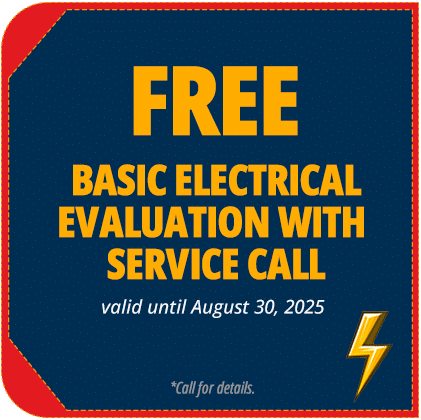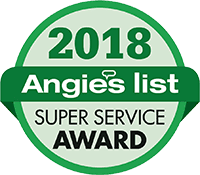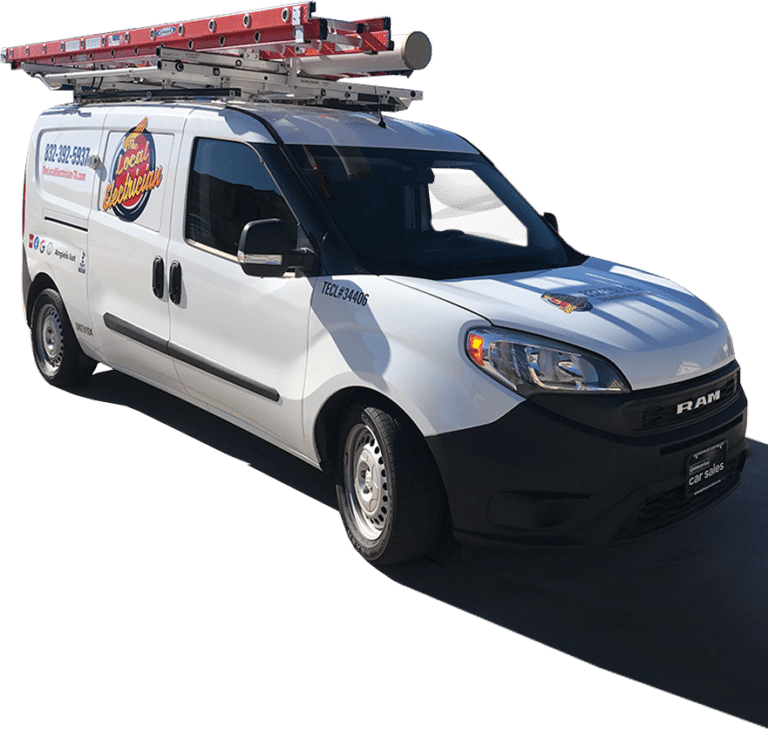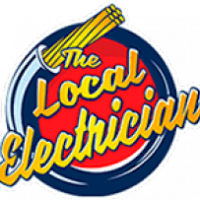Have you ever found yourself in a situation where you needed an alternative power source but weren’t sure how to connect your devices safely and efficiently?
If so, you’re not alone. Many homeowners and outdoor enthusiasts face this challenge, especially when it comes to understanding the intricacies of portable generator plugs.
In this article, we’ll dive deep into the world of portable generator plugs, exploring their types, benefits, and how they can solve your power needs during outages, camping trips, or any situation that requires an alternative power source.
We’ll cover everything from choosing the right plug for your generator to installation tips and safety precautions, ensuring you’re well-equipped to handle your power needs with confidence.
What are Portable Generator Plugs?
Portable generator plugs are indispensable components that bridge the gap between your portable generator and the devices you wish to power, ensuring you have access to electricity in areas where the main power grid is out of reach.
These plugs are meticulously designed to cater to a diverse array of outlets, embodying versatility in their shapes, sizes, and power capacities to seamlessly integrate with your specific power requirements.
Whether you’re planning a camping trip, preparing for emergency power outages, or working on a remote job site, portable generator plugs stand as your reliable ally in connecting to a world of electrical possibilities.
The essence of portable generator plugs lies in their ability to adapt to various electrical standards, making them a universal solution for power delivery.
From standard 120V household plugs to more robust 240V industrial connectors, these plugs ensure that your portable generator can be utilized to its fullest potential, powering everything from small appliances and tools to large pieces of equipment with ease.
Their construction is not only about compatibility but also about safety and durability. High-quality materials and design standards are employed to withstand the rigors of outdoor use, resist environmental elements, and prevent accidental disconnections that could interrupt the power supply.
Moreover, the selection of a portable generator plug is not a one-size-fits-all scenario. It requires consideration of the generator’s output capacity, the electrical requirements of the devices being powered, and the conditions under which the plug will operate.
This thoughtful selection process ensures that the plug not only fits physically but also matches the electrical characteristics needed for safe and efficient operation.
With the right portable generator plug in hand, you’re equipped to harness the power of your generator anywhere, anytime, transforming it from a mere backup option to a versatile power solution for a multitude of applications.
Also read: The Ultimate Guide: When & Why to Upgrade Your Electrical System
Types of Portable Generator Plugs
Portable generator plugs are essential for ensuring that your generator can meet a wide range of power needs, from charging a smartphone in the wilderness to powering a construction site.
Understanding the different types of plugs can help you select the right one for your needs, ensuring safety, efficiency, and reliability.
120V Plugs: The Standard Solution
120V plugs are the most common type of portable generator plug, designed to power everyday appliances and tools that require up to 20 amps of current.
These plugs are ideal for residential use, such as powering lights, fans, small kitchen appliances, and entertainment systems during a power outage.
Their widespread compatibility makes them a staple in most portable generator setups, offering a convenient and straightforward solution for basic power needs.
240V Plugs: For High-Power Applications
240V plugs are designed for equipment and appliances that demand more power, typically found in industrial or heavy-duty residential applications. These plugs can handle larger loads, making them suitable for powering central air conditioning units, electric ranges, and large power tools.
The ability to deliver a higher voltage makes 240V plugs a critical component for users who need to operate high-demand equipment safely and efficiently.
Twist-Lock Plugs: Ensuring Secure Connections
Twist-lock plugs provide an added layer of security by preventing accidental disconnections, a feature particularly valuable in environments where movement and vibration might dislodge standard plugs.
These plugs require a twisting action to lock into place, creating a firm connection that is less likely to come loose.
Twist-lock plugs are ideal for outdoor activities, construction sites, and any situation where a stable power connection is crucial for safety and operational continuity.
Adapting to Your Needs
Each type of portable generator plug serves a specific purpose, catering to different power requirements and operational conditions.
Whether you’re preparing for a short camping trip or a long-term power outage, understanding these plug types ensures you can make informed decisions about how to best meet your power needs.
Selecting the right plug not only maximizes the efficiency of your portable generator but also enhances safety by ensuring that your equipment is properly matched to the generator’s output capabilities.
Choosing the Right Plug for Your Portable Generator
When it comes to ensuring the efficiency and safety of your portable generator, selecting the appropriate plug is paramount. This choice is influenced by various factors, from the power requirements of your devices to the specific output capabilities of your generator.
Understanding these elements can help you make an informed decision, ensuring that your power needs are met without compromising on safety or performance.
Assessing Power Requirements
The first step in choosing the right plug is to assess the total wattage of the devices you intend to power. This involves calculating the sum of the power consumption of each appliance or tool you plan to connect to your portable generator.
By understanding the cumulative power demand, you can select a plug that can handle the load without overheating or causing circuit overloads.
This assessment not only ensures compatibility but also enhances the operational efficiency of your power setup.
Matching Plug to Generator Output
Once you’ve determined your power needs, the next step is to ensure that the plug you choose matches your generator’s output in terms of voltage and amperage. This compatibility is crucial for the safe and effective operation of your portable generator.
A mismatch can lead to insufficient power delivery or, worse, damage to your devices and generator.
It’s important to consult your generator’s manual or specifications to understand its output capabilities before selecting a plug.
Prioritizing Safety Features
Safety should always be a top priority when selecting a portable generator plug.
Look for plugs that come equipped with built-in safety features such as weatherproofing and circuit breakers. Weatherproofing is essential for outdoor use, protecting the plug and connected devices from moisture, dust, and other environmental factors.
Circuit breakers, on the other hand, provide an additional layer of protection by automatically cutting off power in the event of an overload or short circuit, preventing damage to your equipment and reducing the risk of fire.
Choosing the right plug for your portable generator involves a careful consideration of your power needs, the generator’s output, and the safety features of the plug.
By taking the time to assess these factors, you can ensure a safe, efficient, and reliable power supply for your devices, regardless of where you are. Remember, the right plug not only facilitates the smooth operation of your portable generator but also safeguards your equipment and peace of mind.
Installation and Safety Guidelines for Portable Generator Plugs
Ensuring the safe and efficient operation of your portable generator starts with proper installation and adherence to safety guidelines.
Generator plugs are pivotal in connecting your generator to the devices you need powered, but they must be installed correctly to prevent accidents and ensure functionality. Below is a detailed guide on how to install these plugs and the best practices for safety.
Step-by-Step Installation Process
1. Read the Manual
Before anything else, thoroughly read your generator and plug manuals. They contain specific instructions and safety warnings tailored to your equipment.
2. Turn Off the Generator
Ensure the generator is off before attempting to install any plugs. This prevents accidental starts while you’re working.
3. Select the Correct Plug
Match the plug to the generator’s output specifications. Using the wrong plug can lead to inefficient operation or damage.
4. Inspect the Plug
Before installation, inspect the plug for any damage or wear. Do not use it if you find any issues.
5. Connect the Plug
Carefully connect the plug to the generator’s outlet. For twist-lock plugs, insert and turn according to the manufacturer’s instructions to secure the connection.
6. Test the Connection
Once connected, turn on the generator and plug in a small appliance to test the connection. Ensure the appliance operates as expected before connecting more devices.
Safety First: Best Practices
Understanding the Risks
Recognize that improper use of portable generator plugs can lead to electrical shocks, fires, and damage to your appliances.
Use Outdoor-Rated Equipment
Always use plugs and extension cords that are rated for outdoor use to withstand environmental conditions.
Avoid Overloading
Do not exceed the wattage capacity of your generator by plugging in too many devices. This can cause overheating and damage.
Keep Dry
Ensure the plug and generator area are dry before use. Moisture can lead to electrical shocks.
Ventilation is Key
Operate your generator in well-ventilated areas to avoid carbon monoxide poisoning. Never use it indoors or in enclosed spaces.
Regular Maintenance
Regularly check your generator and plugs for signs of wear or damage. Replace any faulty components immediately.
Safety Equipment
Wear appropriate safety gear when installing or handling generator plugs, such as gloves and protective eyewear.
Professional Help
If you’re unsure about the installation process or encounter issues, consult a professional. It’s better to seek help than risk accidents.
By following these detailed installation steps and safety best practices, you can ensure that your use of portable generator plugs is both safe and effective. Remember, safety should always be your top priority when dealing with electrical equipment.
Regular maintenance and adherence to guidelines can prevent accidents and ensure that your generator provides reliable power when you need it most.
Maintenance and Troubleshooting for Portable Generator Plugs
To ensure the longevity and reliability of your portable generator plugs, regular maintenance and proper troubleshooting are essential. These practices not only extend the life of your plugs but also ensure they operate safely and efficiently.
Here’s how you can keep your plugs in top condition and solve common problems that might arise.
Keeping Your Plugs in Top Condition
Regular Inspection
Make it a habit to inspect your portable generator plugs regularly for any signs of wear, damage, or corrosion.
Look for cracked casings, frayed wires, or loose connections. Early detection of these issues can prevent more serious problems down the line.
Cleaning Your Plugs
Dirt, grime, and moisture can lead to poor connections and potential safety hazards. Clean your plugs with a dry cloth to remove any debris.
For tougher grime, use a mild detergent diluted in water, but ensure the plug is completely dry before using it again.
Proper Storage
When not in use, store your portable generator plugs in a cool, dry place. Avoid locations where they might be exposed to extreme temperatures, moisture, or direct sunlight.
Coiling the cords loosely without kinking or tightly bending them will help prevent damage to the wires inside.
Avoiding Moisture
Moisture is a significant enemy of electrical components. If your plug has been exposed to water, thoroughly dry it before use. Consider using plug covers for outdoor applications to protect against moisture ingress.
How to Solve the Common Problems
Loose Connections
If your plug doesn’t seem to fit securely, check for debris in the plug or outlet and clean as necessary. If the problem persists, the plug or outlet may be worn out and need replacement.
Power Fluctuations
Should you experience power fluctuations, ensure the plug is correctly inserted and that there’s no damage to the plug or cord. Also, verify that the generator is running smoothly and not overloaded.
Overheating
Plugs that overheat during use could indicate an overload or a poor connection. Disconnect the plug, allow it to cool, and check for any damage. Ensure your load does not exceed the generator’s capacity.
When to Seek Professional Help
If you encounter persistent issues with your portable generator plugs, such as electrical shorts, consistent overheating, or if you’re unsure about the condition of your plug, it’s time to consult a professional.
Certified electricians can provide expert advice, conduct repairs, or recommend replacements if necessary.
Maintaining your portable generator plugs and being able to troubleshoot common issues are crucial for safe and efficient operation.
Regular care and attention can prevent most problems, but knowing when to seek professional help is equally important to ensure your power needs are met without compromising safety.
How to Maximize Your Portable Generator Plugs
To get the most out of your portable generator, it’s crucial to understand how to maximize the efficiency and utility of your portable generator plugs. This involves not just choosing the right appliances and managing power distribution but also leveraging advanced tips and tricks to enhance your generator’s performance.
Here’s how you can optimize the use of your portable generator plugs for better efficiency and versatility.
Enhancing Efficiency
Optimal Appliance Selection
Start by choosing energy-efficient appliances that require less power to operate.
Look for devices with an Energy Star rating, as they are designed to consume less electricity. This approach allows you to power more devices with your generator without exceeding its capacity.
Smart Power Distribution
Managing how you distribute power among your appliances can significantly impact efficiency. Use a power strip with surge protection to safely connect multiple devices to a single portable generator plug.
Prioritize your power needs, connecting essential appliances first and adding others as your generator’s capacity allows.
Regular Maintenance
Keeping your generator in top condition is key to maximizing efficiency. Regular maintenance checks, including oil changes, filter replacements, and spark plug inspections, ensure your generator operates smoothly and efficiently, reducing fuel consumption and preventing power loss.
Advanced Tips and Tricks
Parallel Connections
If you own more than one portable generator, consider using a parallel kit to connect them.
This setup can double your power output, allowing you to run larger appliances or more devices simultaneously without overloading a single generator.
Energy Management
Use a programmable timer or smart plugs to control when certain appliances run. This can be particularly useful for managing energy consumption by running high-demand appliances like washing machines or dishwashers during off-peak hours.
Creative Uses
Think beyond emergency or backup power.
Portable generator plugs can be used to power outdoor events, from weddings to backyard movie nights, providing a reliable power source for lighting, sound systems, and catering equipment.
Emergency Preparedness
Equip your generator with a transfer switch, allowing you to safely power your home’s essential circuits directly. This setup is invaluable during extended outages, ensuring you have power for heating, refrigeration, and medical devices.
By adopting these strategies and tips, you can enhance the efficiency and utility of your portable generator plugs.
Whether it’s through smart appliance selection, power management, or creative uses, optimizing your portable generator setup ensures you’re prepared for any situation, from everyday convenience to emergency scenarios.
Maximizing Safety and Efficiency with Portable Generator Plugs
In this section, we delve deeper into how to maximize both safety and efficiency when using portable generator plugs, ensuring that you get the most out of your portable power source while keeping safety at the forefront.
Understanding Electrical Load Balancing
Electrical Load Balancing: Learn how to balance the electrical load on your portable generator to prevent overloading one plug, which can lead to overheating and potential damage.
This involves strategically distributing power consumption across different plugs and circuits to enhance efficiency and extend the lifespan of your generator.
Calculating Power Needs: A step-by-step guide on calculating the total power needs of your appliances and how to distribute them effectively across your generator plugs. This includes tips on prioritizing essential appliances and using load calculators for accurate assessments.
Advanced Portable Generator Plug Features
Smart Plugs for Generators: Explore the latest advancements in generator plug technology, including smart plugs that allow for remote monitoring and control of your generator’s output. Discover how these smart plugs can help you manage power usage, schedule operations, and improve overall efficiency.
Weather-Resistant Options: Highlighting the importance of using weather-resistant generator plugs for outdoor use or in harsh weather conditions. These plugs are designed to withstand moisture, dust, and extreme temperatures, ensuring reliable performance when you need it most.
Safety Protocols for Emergency Situations
Emergency Preparedness: Tips on preparing your portable generator and plugs for emergency situations, including routine checks, emergency kits, and the importance of having a plan in place for quick and safe setup when power outages occur.
Carbon Monoxide Safety: Emphasizing the dangers of carbon monoxide poisoning associated with improper use of portable generators and how to mitigate these risks.
This includes recommendations for safe placement of the generator, the use of carbon monoxide detectors, and ensuring adequate ventilation.
Enhancing Portable Generator Performance and Safety
This section aims to delve deeper into optimizing the performance and ensuring the safety of your portable generator through proper use of generator plugs.
It will cover advanced strategies for efficient power management, safety enhancements, and innovative uses of your portable generator setup.
Optimizing Power Management with Portable Generator Plugs
Efficient power management is crucial for maximizing the output of your portable generator while ensuring the safety and longevity of your devices. This involves understanding the power capacity of your generator, the energy requirements of your connected devices, and how to distribute the load effectively.
Strategic Load Distribution: Discuss the importance of evenly distributing the electrical load across different plugs to prevent overloading and overheating.
Energy Monitoring: Highlight the benefits of using energy monitors or smart plugs that can track power usage in real-time, allowing for more informed decisions about power distribution.
Prioritizing Device Connection: Offer insights on how to prioritize which devices to power based on necessity, power consumption, and the generator’s capacity, ensuring critical devices remain powered during outages.
Safety Enhancements for Portable Generator Use
Safety should always be a top priority when operating portable generators and their plugs. This section can explore additional measures to enhance safety and prevent accidents.
Regular Safety Audits: Emphasize the importance of conducting regular safety audits of your portable generator setup, including checks on plugs, cords, and the generator itself.
Implementing Ground-Fault Circuit Interrupters (GFCIs): Discuss how using GFCIs with portable generator plugs can prevent electrical shocks, especially in damp conditions.
Safe Storage Practices: Provide guidelines for safely storing generator plugs when not in use to prevent damage and ensure they are ready for the next use.
Innovative Uses of Portable Generators
Beyond emergency power supply, portable generators, when coupled with the right plugs, can be used for a variety of innovative applications.
Outdoor Events: Describe how portable generators can power outdoor events, from weddings to community gatherings, highlighting the role of the right plugs in facilitating diverse power needs.
Remote Work Locations: Offer insights into using portable generators to power tools and equipment in remote work locations, such as construction sites or outdoor workshops, emphasizing the importance of selecting the right plugs for heavy-duty use.
Recreational Activities: Explore how portable generators can enhance recreational activities, such as camping or tailgating, by providing power for cooking appliances, lighting, and entertainment systems.
Top 5 Tested and Proven Tips For Optimizing The Use of Portable Generator Plugs
We will delve deeper into how these can significantly enhance your experience, whether for recreational, emergency, or work-related purposes.
Each strategy is designed to ensure you get the most out of your portable generator, combining efficiency with safety.
Choosing Generators with RV Outlets
User-Friendly Features for Enhanced Flexibility: Generators equipped with RV outlets are specifically designed to cater to the needs of RV owners and outdoor enthusiasts. These generators often come with dual fuel capability, allowing users the flexibility to switch between gasoline and propane based on availability and preference.
Additionally, remote control operation simplifies the start and stop process, making it more convenient to manage power needs from a distance.
The inclusion of RV outlets directly on the generator means you can power your RV or camping equipment without the need for adapters, streamlining the setup process and reducing clutter.
Understanding Transfer Switches
Seamless Home Integration: The GenerLink transfer switch represents a significant advancement in how portable generators interface with home electrical systems.
By providing a direct connection to the home’s electrical panel, it eliminates the reliance on extension cords, reducing potential tripping hazards and simplifying the process of distributing power where it’s needed most.
This system not only enhances safety by preventing backfeeding, which can be dangerous to utility workers and damage electrical systems, but also ensures a more efficient use of the generator’s capacity by directly powering home circuits.
Safe Connection to Home Power
Critical Safety Measures: Installing a GenerLink transfer switch directly on the meter offers a straightforward solution to safely connect your portable generator to your home. This method significantly reduces the risks associated with improper generator use, such as electrical fires or carbon monoxide poisoning from running generators too close to living spaces.
The ease of connection provided by the GenerLink system encourages proper use and increases the likelihood that homeowners will take advantage of their portable generators during power outages, ensuring access to essential services like heating, cooling, and refrigeration.
Portable Power Stations
Silent and Versatile Power Solutions: Portable power stations offer a silent, fuel-free alternative to traditional generators, making them perfect for use in quiet environments or where gasoline storage is impractical.
These compact units can power everything from laptops and smartphones to small appliances, making them ideal for camping, tailgating, or as a backup power source for home medical equipment.
Their rechargeability via wall outlets, vehicles, or solar panels adds a layer of versatility and eco-friendliness, appealing to a wide range of users.
Maximizing Generator Efficiency
Strategic Power Use and Appliance Selection: Maximizing the efficiency of your portable generator involves more than just careful selection of appliances; it requires a strategic approach to power management. By prioritizing the connection of high-efficiency appliances and spreading the load evenly across available plugs, users can avoid overloading the generator, which can lead to wear and tear or even failure.
Regular maintenance, including checking oil levels, air filters, and plug conditions, further ensures that the generator operates at peak efficiency, providing reliable power while minimizing fuel consumption and emissions.
Incorporating these strategies into your use of portable generator plugs not only enhances the overall efficiency and safety of your power generation system but also extends the lifespan of your equipment, ensuring that you remain powered up in any situation.
The Local Electrician TX: Your Go-to Portable Generator Plugs Experts
When it comes to managing your portable generator plug needs, The Local Electrician TX stands out as a reliable partner.
With a comprehensive range of services that encompass professional advice, installation, and maintenance, this expert team ensures your portable generator system operates efficiently and safely.
Let’s delve into how The Local Electrician TX can assist you, highlighting their service areas and providing a direct call to action for their top-notch services.
Professional Advice and Consultation
Expert Guidance
The Local Electrician TX offers expert advice to help you select the right generator plugs for your specific needs.
Whether you’re looking for solutions for residential use, outdoor activities, or emergency power backup, their knowledgeable team can guide you through the options available, ensuring you make an informed decision.
Customized Solutions
Understanding that every situation is unique, The Local Electrician TX provides personalized consultation services. They assess your power requirements, generator capacity, and safety considerations to recommend the most suitable plugs and accessories, tailored to your circumstances.
Installation Services
Safe and Efficient Installation
With a team of certified electricians, The Local Electrician TX ensures your portable generator plugs are installed correctly and safely.
They follow stringent safety standards and manufacturer guidelines to guarantee a secure connection, minimizing the risk of accidents and ensuring optimal performance.
Comprehensive Setup
Beyond just installing plugs, The Local Electrician TX can also assist with setting up entire portable generator systems. This includes integrating your generator with your home or business’s electrical system, installing transfer switches, and ensuring your setup complies with local codes and regulations.
Maintenance and Support
Regular Maintenance
To keep your generator plugs and system in top condition, The Local Electrician TX offers routine maintenance services.
From inspecting and cleaning plugs to testing the entire system for efficiency and safety, their thorough approach helps prevent potential issues and extends the lifespan of your equipment.
Emergency Support
In case of any problems or emergencies, The Local Electrician TX provides prompt and reliable support. Their team is ready to address issues, perform repairs, or replace components as needed, ensuring your power supply remains uninterrupted.
Serving a wide range of locations, including Pecan Grove, Meadows Place, Stafford, Sugarland, Richmond, Rosenberg, Fulshear, Jersey Village, Heights, Memorial, Energy Corridor, Missouri City, Bellaire, West University, Spring Valley Village, Houston, and Katy, The Local Electrician TX is well-positioned to meet your portable generator plug needs across the region.
For professional advice, installation, or maintenance services, don’t hesitate to contact The Local Electrician TX at (832) 688-4419.
Explore their services further and read customer reviews and ratings by visiting their Google My Business link: The Local Electrician TX GMB.
Whether you’re preparing for emergency power outages or enhancing your outdoor adventures, The Local Electrician TX is your go-to source for all things related to portable generator plugs.
Conclusion
In this comprehensive guide, we’ve explored the critical aspects of portable generator plugs, emphasizing their pivotal role in ensuring a reliable power supply when you’re off the grid or facing power outages.
From understanding the different types of plugs—each designed for specific applications and power needs—to the importance of selecting the right plug based on your generator’s output and the devices you intend to power, we’ve covered the essentials to help you make informed decisions.
Safety cannot be overstated; following the manufacturer’s installation instructions, using heavy-duty, outdoor-rated extension cords, and adhering to safety guidelines are paramount to prevent accidents and ensure efficient operation.
Regular maintenance and proper storage of your generator plugs will extend their lifespan and maintain their performance.
We also delved into how The Local Electrician TX can assist with your portable generator plug needs, offering professional advice, installation, and maintenance services to keep your system running smoothly.
We encourage you to share your experiences, tips, or questions about portable generator plugs in the comments below.
Your insights can help build a knowledgeable community, fostering discussion and sharing valuable information on making the most of your portable generator. Whether you’re a seasoned user or new to portable generators, your contributions are welcome as we navigate the world of portable power together.
FAQs
1.What is the difference between a 120V and a 240V portable generator plug?
The main difference lies in the voltage they supply. A 120V plug is standard for most household appliances and tools, providing power suitable for devices that require up to 120 volts.
On the other hand, a 240V plug is used for high-demand appliances, such as air conditioners, dryers, and large power tools, which require more voltage to operate efficiently.
2.How do I know if my portable generator plug is compatible with my generator?
Check the specifications of both your generator and the plug. The generator’s output ports will indicate the voltage and amperage they support
3.Can I use an adapter with my portable generator plug for different outlets?
While adapters can make a plug fit different outlets, they do not change the electrical characteristics of the connection. Use adapters cautiously and ensure they are rated for the power demands of your setup.
4.How often should I inspect and maintain my portable generator plugs?
Inspect your portable generator plugs at least every three to six months and before each use. Look for signs of wear, damage to the insulation, or corrosion on the contacts.
5.What should I do if my portable generator plug gets wet?
Immediately disconnect the plug (ensure you’re dry and standing on a dry surface to avoid electrocution) and allow it to dry completely before next use.
If the plug is submerged or exposed to water frequently, inspect it for corrosion or damage. Consider replacing the plug if there’s any sign of deterioration.
6.Is it safe to use extension cords with portable generator plugs?
Yes, but ensure the extension cords are rated for outdoor use, have a sufficient wire gauge for the load, and are as short as possible to minimize voltage drop
7.How can I prevent overloading my portable generator plug?
Calculate the total wattage of the devices you plan to connect and ensure it does not exceed the generator’s output capacity. Use a watt meter to monitor consumption actively, and prioritize essential devices to avoid overloading.
8.What are the signs of a faulty portable generator plug?
Signs include visible damage to the plug or cord, a burning smell during use, intermittent power while in use, or the plug feeling unusually hot. These symptoms indicate it’s time to replace the plug to prevent safety hazards.
9.Can I install a portable generator plug myself?
If you have basic electrical knowledge and the installation is straightforward, you might be able to do it yourself. However, for complex setups or if you’re unsure, it’s safer to hire a professional electrician.
10.How do portable generator plugs impact energy efficiency?
Properly matched and maintained plugs ensure that there is minimal electrical resistance and secure connections, which can reduce energy loss.
Efficient power transfer from the generator to your devices means less fuel consumption for the generator and better overall energy efficiency for your setup.






























